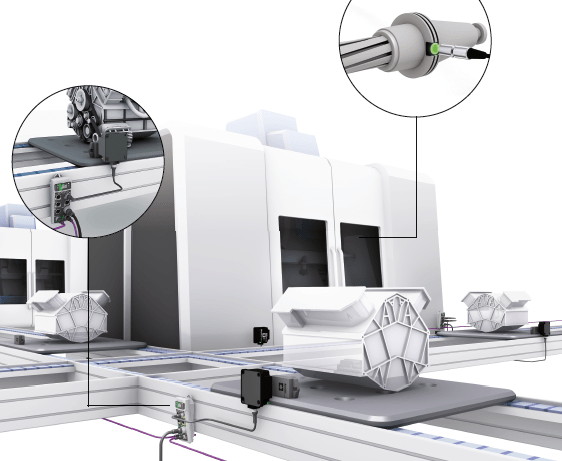In this contribution you can read about what technical prerequisites have to be met for RFID to play such an important role in tool identification and workpiece tracking, and what RFID means for modern production.
Tool Identification and Workpiece Tracking
RFID – A key technology in modern production

Tool-ID application with RFID Chip in the standardized Tool-Holder
High level of automation reduces cost & increases quality
Modern production processes need the highest possible level of automation. On one hand, this reduces the cost per unit after the investment and in the long term. In addition, automated processes result in fewer quality deviations than manually guided processes. On the other hand, industrial manufacturing requires ever more flexible use of the production equipment as the part variety continues to grow. For example, to be able to realize individual, custom-tailored solutions
for customers. To meet these challenges of the manufacturing processes in metalworking, modern machine tools must automatically control and monitor
material flows. This applies to both the path of the workpieces through the plant (as components of the product to be manufactured) and to the tools used for the machining process. RFID, offering fast data communication in real-time, meets these requirements. The autonomous system gathers and documents production and quality data on a continuous basis, so that the data can be recalled at any time.
Tool Identification with RFID
Tool Identification using RFID has been successfully used on machine tools for around 30 years. Since the mid-1980’s, inductive sensor technology made it possible even then to transmit data by means of inductive oscillation. Signals were modulated over the oscillation. This allowed for the first time tool-relevant data, i.e. the specific information about the respective tool, to be stored without contact on a data carrier attached to the tool holder. This ensures unambiguous recognition and matching of the tool (Fig. 2). And with the help of RFID read heads, the tool data can be read out wherever desired (such as on the machine tool) or both read and written (such as on the tool presetter). The automatic process of the data ensures that all the data are always correct and current.
























